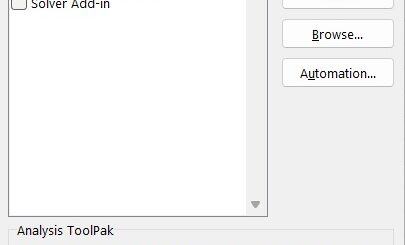Google Sheets Essential Tips and Tricks
Google Sheets Essential Tips and Tricks, Google Sheets is an invaluable asset for managing data, whether for professional projects, academic tasks, or personal organization.
While many users rely on basic functionalities, the software boasts a treasure trove of advanced features that can streamline your workflow and enhance productivity.
If you sometimes feel overwhelmed by its capabilities, you’re not alone—but fear not, as we’ve compiled a list of strategies to help you navigate through Google Sheets with confidence.
Here are 10 tips and tricks to elevate your Google Sheets experience:
- Get Comfortable with Keyboard Shortcuts
Maximize your efficiency with keyboard shortcuts. They enable quick navigation and reduce time spent on repetitive tasks.
Here are some useful shortcuts:
- Select entire row: Shift + Space
- Select entire column: Ctrl + Space (Windows) or Cmd + Space (Mac)
- Insert a new row: Alt + I, R (Windows) or Ctrl + Option + I, R (Mac)
- Duplicate cells: Ctrl + D (Windows) or Cmd + D (Mac)
You can explore a complete list of shortcuts to tailor your experience.
- Utilize Built-in Functions
Functions can significantly enhance your data analysis and save time. Google Sheets has numerous built-in functions that let you manipulate and assess your data effectively.
Key functions include:
- SUM:
=SUM(A1:A10)to calculate the total. - AVERAGE:
=AVERAGE(B1:B10)for calculating the mean. - IF:
=IF(C1>100, “Yes”, “No”)for conditional logic. - VLOOKUP:
=VLOOKUP(1001, A2:C10, 3, FALSE)to search and retrieve data.
Explore the range of functions available to find the right tools for your needs.
- Implement Conditional Formatting
Conditional formatting allows you to change cell colors based on predefined rules, making it easier to identify patterns or anomalies.
To set it up:
- Highlight the desired cell range.
- Navigate to Format > Conditional Formatting.
- Choose your condition (e.g., greater than, less than).
- Select a color and apply.
Just a word of caution: overusing color coding can lead to confusion. Use it purposefully!
- Employ Filters
Filters help you manage the visibility of your data, allowing you to focus on specific entries without altering your underlying data permanently.
To apply filters:
- Select your data range.
- Click on Data > Create a filter.
- Utilize the dropdown menus in column headers to filter results efficiently.
Filters are a fantastic way to streamline your view when you only want to see specific data.
- Freeze Rows and Columns
Freezing rows or columns ensures that critical information remains visible while scrolling through large spreadsheets.
To freeze:
- Select the row or column to freeze.
- Go to View > Freeze.
- Choose whether to freeze a single row, multiple rows, or entire columns.
- Create Pivot Tables
Pivot tables are a remarkable feature for summarizing and analyzing your data in diverse ways, revealing trends and insights.
Machine Learning Archives » Data Science Tutorials
To create one:
- Select your data and navigate to Data > Pivot table.
- Rearrange fields into Rows, Columns, and Values to generate summaries.
Find tutorials online to harness the power of pivot tables fully.
- Use Data Validation
Data validation helps maintain the integrity of your data by ensuring entries adhere to specified criteria, preventing errors and standardizing inputs.
To set up data validation:
- Highlight the target cell or range.
- Go to Data > Data Validation.
- Specify your criteria (e.g., number, date).
- Optionally, set an error message for invalid inputs.
- Protect Sheets and Ranges
Prevent accidental changes by protecting specific sheets or ranges. This allows you to control who can edit what, safeguarding your data.
To protect:
- Select the range or sheet.
- Right-click and choose Protect range.
- Specify the permissions for collaborators.
Though managing permissions can be complex, it is vital for maintaining order in collaborative environments.
- Explore Add-ons
Google Sheets supports a wide array of add-ons that enhance its functionality, covering areas such as data analysis, project management, and design enhancements.
To find add-ons:
- Go to Extensions > Add-ons > Get add-ons.
- Search for what you need in the Google Workspace Marketplace.
- Click Install to integrate the add-on into your Sheets.
- Collaboration in Real-Time
One of Google Sheets’ standout features is the ability for multiple users to collaborate simultaneously. This fosters effective teamwork on shared projects, with real-time updates visible to all.
To collaborate:
- Click on Share in the top right corner.
- Enter your collaborators’ email addresses.
- Set their permissions (view, comment, or edit).
Keeping conversations within Google Sheets can streamline communication and enhance teamwork.
Conclusion
Google Sheets is a robust tool that can serve anyone’s data management needs more efficiently.
By implementing these tips and tricks, you can improve your workflow, reduce time spent on tasks, and easily manage complex datasets.
Start applying these techniques today to unlock the full potential of Google Sheets and elevate your productivity!
- Best online course for R programming
- Predictive Modeling and Data Science
- How to perform do.call in R
- Is it a good idea to do a master’s degree in statistics




